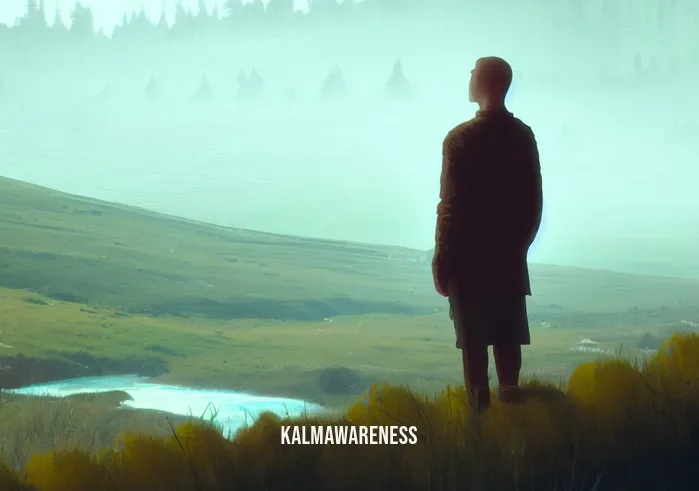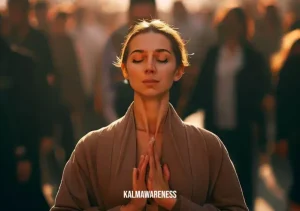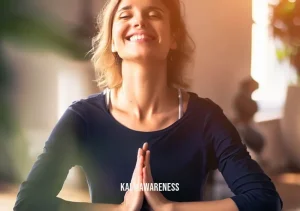Dragon Pose Yin Yoga
| Description | Explanation |
|---|---|
| Pose Name | Dragon Pose Yin Yoga |
| Original Name | Astavakrasana |
| Difficulty Level | Intermediate |
| Pose Category | Yin Yoga |
| Exercise Duration | For Beginners: 1-2 minutes per side, Advanced: 3-5 minutes per side |
Introduction to Dragon Pose Yin Yoga
Welcome to the world of Yin Yoga, where we explore deep stretches and find tranquility in stillness. In this chapter, we’ll delve into the captivating “Dragon Pose,” also known as “Astavakrasana,” a pose that challenges your strength, balance, and flexibility. Unleash the inner dragon within you as we guide you through the steps and benefits of this unique and powerful yoga pose.
Understanding Dragon Pose
Dragon Pose Yin Yoga, or Astavakrasana, is a variation of the traditional Eight-Angle Pose, derived from the ancient practice of yoga. It is a combination of balance and twists that create a graceful yet intense posture, resembling the shape of a coiled dragon. While it may seem daunting at first, with patience and practice, you can master this empowering pose.
Benefits of Dragon Pose Yin Yoga
Embrace the dragon and reap the numerous benefits that come with practicing this pose. Here are some of the advantages you can experience:
- Strengthens the Core: Dragon Pose heavily engages the core muscles, helping you build a strong and stable center.
- Improves Balance: As you balance on your hands and lift one leg, you enhance your sense of balance and coordination.
- Enhances Flexibility: The twisting motion involved in this pose deeply stretches your hips, hamstrings, and spine, improving overall flexibility.
- Tones the Arms: Supporting your body weight on your hands tones the arms and shoulders.
- Stimulates Digestive Organs: The twist in the pose massages the abdominal organs, aiding digestion.
Step-by-Step Guide for Dragon Pose Yin Yoga
Let’s dive into the step-by-step instructions to achieve the Dragon Pose:
- Starting Position: Begin in a seated position with your legs extended forward. Place your hands behind your hips, fingers pointing forward.
- Bend Your Knees: Bend your knees and lift your feet off the floor. Keep your ankles crossed and balance your weight on your hands.
- Twist Your Body: As you exhale, twist your body to the right, bringing your knees towards your right arm.
- Engage the Core: Engage your core and lean forward, shifting your weight onto your hands.
- Lift Your Leg: Extend your left leg out to the side, keeping it parallel to the floor.
- Find Stability: Maintain the pose for the desired duration, keeping your gaze focused and your breath steady.
- Release and Repeat: Gently release the pose and return to the starting position. Then, repeat on the other side.
Holding the Pose
For beginners, start with holding the Dragon Pose for 1-2 minutes on each side. As you advance in your practice, aim for 3-5 minutes per side. Remember to breathe deeply and listen to your body’s cues during the pose.

Dragon Pose Yin Yoga: Unleashing the Inner Fire
Welcome back to the captivating world of Dragon Pose Yin Yoga! In this chapter, we will explore more about the benefits of this empowering pose, discover who can practice it safely, and explore variations suitable for practitioners of different experience levels. So, let’s dive right in and continue our journey with the dragon!
Benefits of Dragon Pose Yin Yoga
Dragon Pose Yin Yoga offers an array of physical, mental, and emotional benefits. Let’s delve deeper into how this pose can positively impact your well-being:
- Hip Flexor Stretch: The deep stretch in the hip flexors can help alleviate tightness and discomfort caused by prolonged sitting or physical activities.
- Spinal Flexibility: Dragon Pose involves a gentle twist that enhances spinal flexibility, improving posture and reducing back pain.
- Emotional Release: The hip area is known to store emotional tension. Practicing this pose may release pent-up emotions and promote emotional healing.
- Mindful Focus: While holding the pose, you develop mental focus and concentration, as your attention is directed towards finding balance and stability.
- Energy Activation: Dragon Pose stimulates the flow of energy throughout the body, revitalizing and invigorating your entire being.
Who Should Avoid Dragon Pose Yin Yoga
While Dragon Pose Yin Yoga offers numerous benefits, it may not be suitable for everyone. Here are some considerations for practitioners who should avoid this pose:
- Pregnant Individuals: Pregnant women should avoid intense twists and certain abdominal poses, making Dragon Pose unsuitable during pregnancy.
- Recent Injuries: If you have a recent injury in the wrists, arms, shoulders, or hips, it’s best to avoid Dragon Pose until you have fully healed.
- Chronic Hip or Knee Issues: Those with chronic hip or knee issues should exercise caution or consult a yoga instructor or healthcare provider before attempting this pose.
- High Blood Pressure: If you have high blood pressure or other cardiovascular issues, it’s essential to approach the pose with caution or avoid it altogether.
Variations of Dragon Pose for Different Levels
Dragon Pose Yin Yoga can be modified to suit practitioners of varying experience levels. Here are some variations you can explore:
- Beginner’s Variation: For beginners, it’s advisable to use yoga blocks under your hands for added support and to reduce the depth of the twist.
- Intermediate Variation: As you progress, you can attempt the pose without yoga blocks and aim to hold it for longer durations, gradually increasing the challenge.
- Advanced Variation: Advanced practitioners can experiment with lifting the extended leg higher or even attempt a transition to other arm balances.
Reaching New Heights with Dragon Pose
It’s essential to approach Dragon Pose Yin Yoga with mindfulness and respect for your body’s limitations. Listen to your body and avoid pushing yourself beyond your comfort zone. As you continue your yoga journey, you will discover new heights of strength, flexibility, and balance.
In the next chapter, we will explore the significance of the “Yoga Cluster” and its connection to Dragon Pose Yin Yoga. Additionally, we’ll delve into the fascinating world of variations and modifications for this pose, allowing you to tailor your practice according to your unique needs and goals.
Keep on reading and join us on this exciting quest to uncover the wonders of Dragon Pose Yin Yoga!

Dragon Pose Yin Yoga: Unraveling its Mystical Origins
As we embark on the final leg of our journey through Dragon Pose Yin Yoga, we will dive into the rich history and spiritual significance of this ancient posture. Additionally, we’ll explore essential tips for optimizing your practice, common mistakes to avoid, and modifications tailored for individuals with injuries or limited flexibility. Let’s continue to unlock the secrets of the dragon within!
The History of Dragon Pose Yin Yoga
Dragon Pose Yin Yoga traces its roots back to the ancient practices of yoga, where it was revered as a symbol of strength, wisdom, and transformation. The pose draws inspiration from the mythical dragons of Eastern cultures, symbolizing power, resilience, and the ability to conquer challenges. Over the centuries, Dragon Pose has evolved and been integrated into various yoga traditions, making it a timeless and revered posture.
The Spiritual Significance of Dragon Pose
Beyond the physical benefits, Dragon Pose Yin Yoga holds profound spiritual significance. As you embody the posture of the dragon, you connect with the elemental forces within and around you. The twisting motion represents the dance of opposing forces, symbolizing the balance between light and darkness, strength and flexibility, and stability and adaptability. Practicing Dragon Pose encourages self-discovery, fostering the exploration of one’s inner landscape and inviting a deeper understanding of the self.
Tips for Getting the Most Out of Dragon Pose
To maximize the benefits of Dragon Pose Yin Yoga and deepen your practice, consider these valuable tips:
- Breathe Mindfully: Maintain a steady and controlled breath throughout the pose. Deep, rhythmic breathing will enhance your focus and aid in relaxation.
- Engage the Core: Keep your core muscles engaged to support your spine and maintain stability in the pose.
- Gradual Progression: Approach the pose with patience and gradual progression. Don’t force yourself into a full expression; instead, honor your body’s limits and progress steadily.
- Stay Relaxed: While Dragon Pose can be challenging, avoid tensing up your body. Cultivate a sense of ease and relaxation even in moments of intensity.
- Mind-Body Awareness: Pay attention to the sensations, thoughts, and emotions that arise during the pose. Observe without judgment and embrace the process of self-awareness.
Common Mistakes to Avoid
As you practice Dragon Pose Yin Yoga, be mindful of these common mistakes to ensure a safe and effective experience:
- Overexertion: Avoid pushing yourself too far into the twist. Listen to your body and respect your limitations.
- Collapsed Shoulders: Keep your shoulders away from your ears and maintain an open chest throughout the pose.
- Neglecting Breath: Don’t hold your breath. Focus on steady and continuous breathing to support your practice.
Modifications for Injuries or Limited Flexibility
For practitioners with injuries or limited flexibility, modifications can provide a safe and accessible way to experience the benefits of Dragon Pose Yin Yoga:
- Use Props: Utilize yoga blocks or cushions under your hands or hips to reduce strain and provide support.
- Knee Support: If you experience discomfort in your knees, place a folded blanket or cushion under the knee of the extended leg.
- Half Dragon Pose: For beginners or those with limited flexibility, practice a gentler version of the pose by keeping your bottom knee on the floor and lifting only one leg.
Complementary Poses
Enhance your Dragon Pose Yin Yoga practice by incorporating these complementary poses:
- Child’s Pose (Balasana): A gentle resting pose that stretches the lower back and hips, providing a counterbalance to the intensity of Dragon Pose.
- Seated Forward Bend (Paschimottanasana): A calming forward bend that further stretches the hamstrings and lower back.
- Pigeon Pose (Eka Pada Rajakapotasana): A deep hip opener that complements the hip flexor stretch of Dragon Pose.
Embrace the Dragon Within
Dragon Pose Yin Yoga is a profound journey of strength, self-discovery, and transformation. As you practice this empowering pose, remember to approach it with reverence, patience, and self-compassion. The dragon within you is a symbol of your inner power and resilience, ready to rise and face life’s challenges with grace.
We hope you have enjoyed this comprehensive exploration of Dragon Pose Yin Yoga and that it has ignited your passion for yoga and self-growth. Remember to listen to your body, stay curious, and continue to embrace the magic of yoga in your daily life.
Conclusion: In conclusion, Dragon Pose Yin Yoga is not merely a physical posture; it is a gateway to a deeper connection with oneself and the universe. Let the dragon pose inspire you to embark on a journey of self-transformation and self-discovery. Whether you are a seasoned yogi or just beginning your yoga adventure, the dragon welcomes you to explore the wonders of Yin Yoga and find your inner fire. Thank you for joining us on this enlightening journey!





